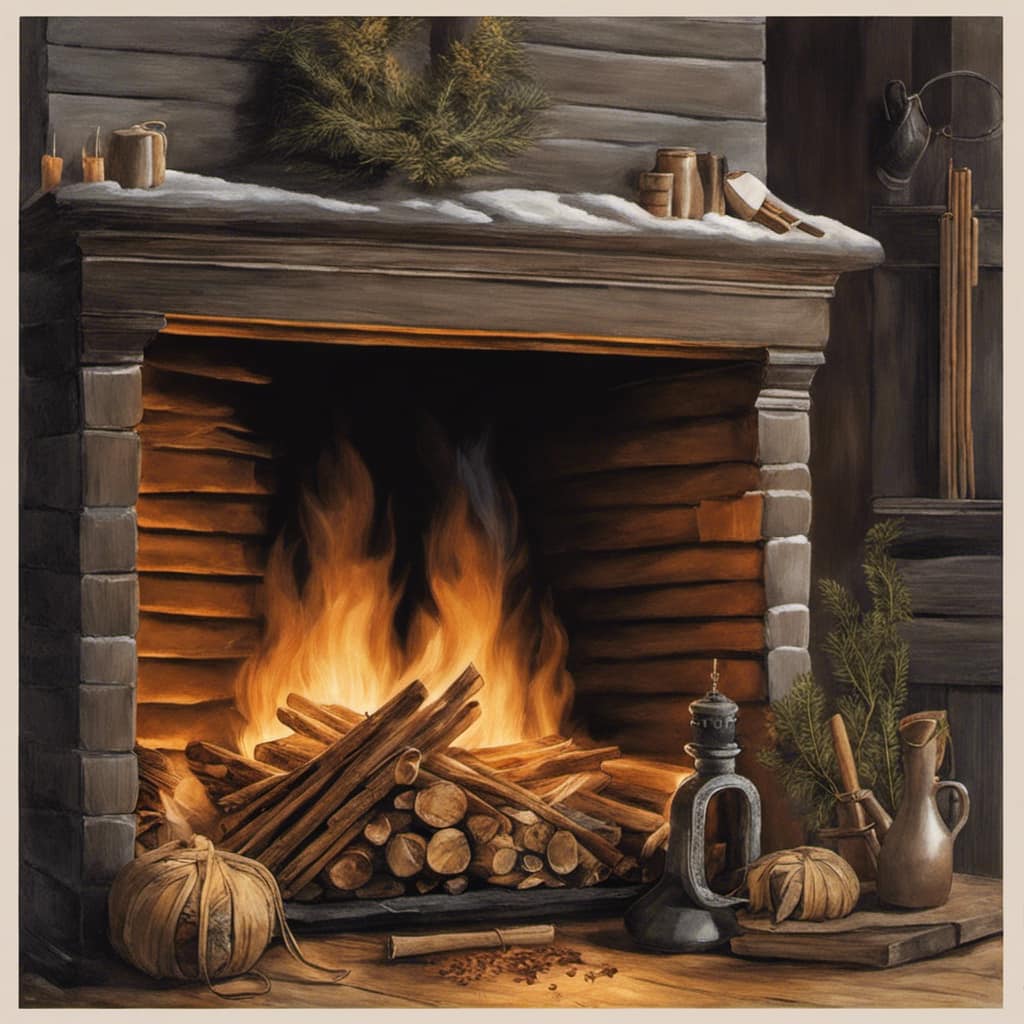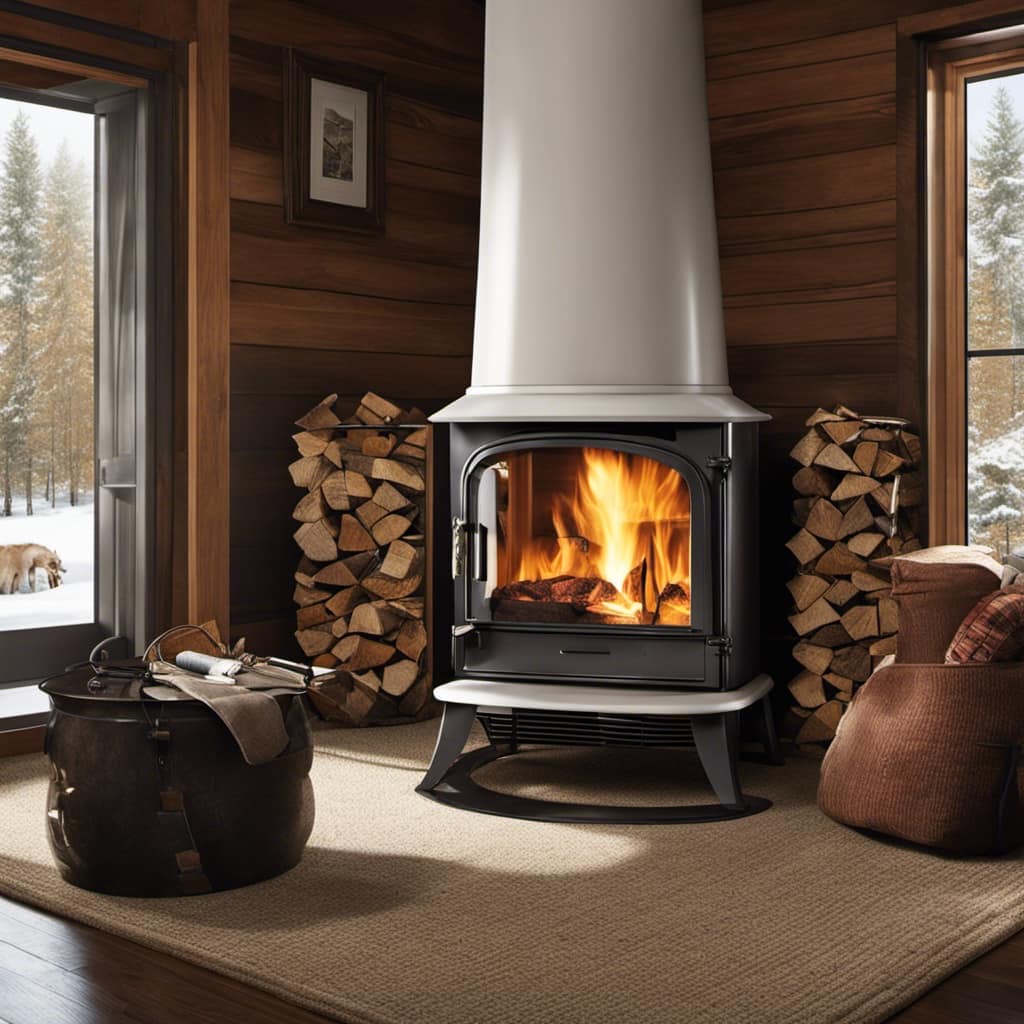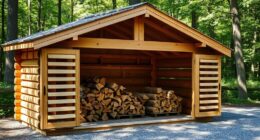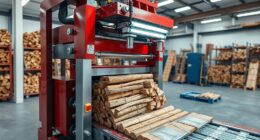As an experienced fan of wood stoves, I have discovered that mastering the skill of properly loading a wood stove can significantly improve the coziness and heat provided by your home.
In this article, I’ll guide you through the intricacies of loading your stove with precision and finesse.
From understanding the anatomy of a wood stove to selecting the best type of wood, I’ll equip you with the knowledge and techniques to create a cozy and efficient fire.
So, let’s dive in and explore the world of wood stove loading together.
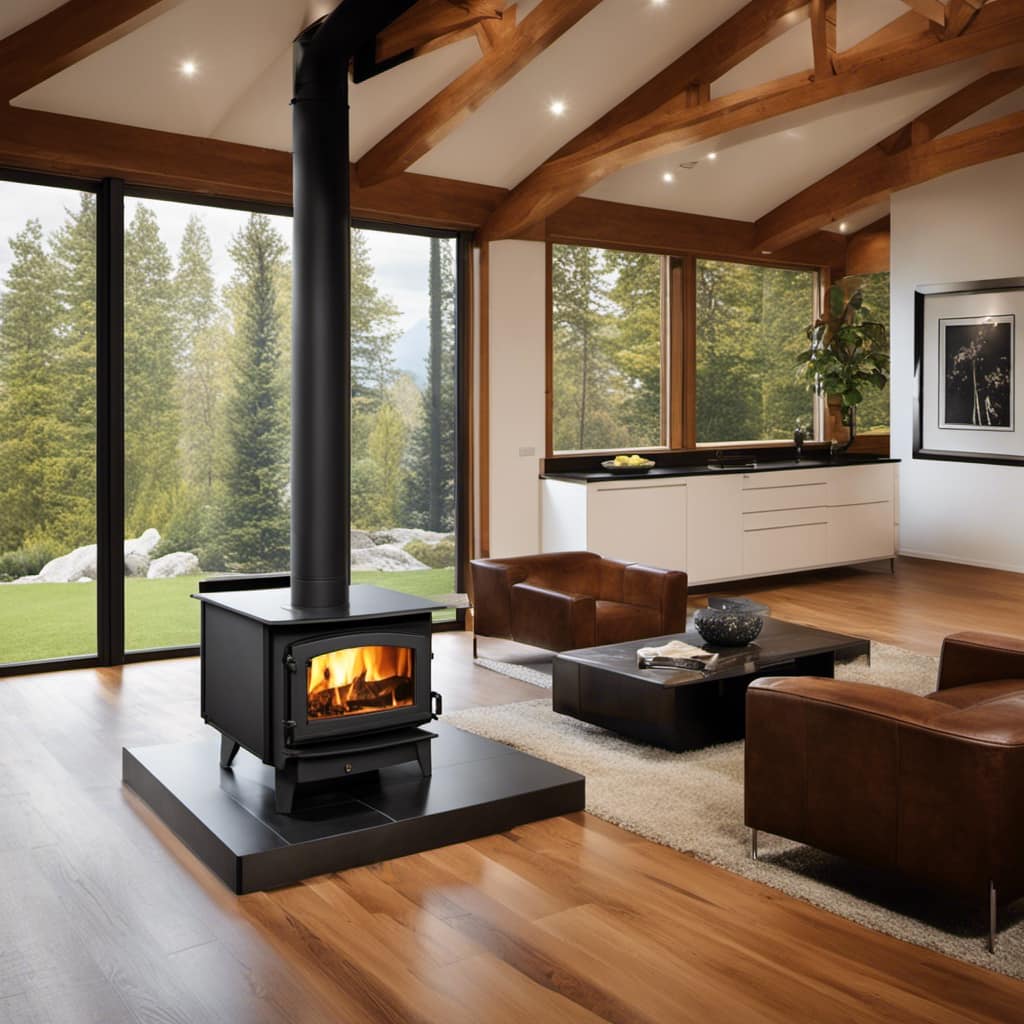
Key Takeaways
- Loading the wood stove properly is essential for efficient combustion and heat production.
- Use well-seasoned hardwood with a moisture content of 20% or less for optimal burning.
- Properly store firewood in a dry and well-ventilated area to prevent mold growth and maintain low moisture levels.
- Use stacking methods like crisscross, pyramid, or lean-to to ensure better airflow and more efficient burning.
Understanding the Anatomy of a Wood Stove
I can easily identify the different parts of a wood stove. Understanding the anatomy of a wood stove is essential for proper maintenance and ensuring proper ventilation. Let’s take a closer look at the different components.
First, we’ve the firebox, which is where the wood is loaded and burned. It’s typically made of heavy-duty cast iron or steel to withstand high temperatures. The firebrick lining inside the firebox helps in retaining heat and protecting the stove’s structure.
Next, we’ve the baffle or damper, located above the firebox. It controls the airflow and directs the smoke and gases towards the chimney. Properly adjusting the baffle ensures efficient combustion and prevents smoke from escaping into the room.
The stovepipe connects the stove to the chimney. It should be made of sturdy, heat-resistant material and properly secured to prevent leaks. Regular cleaning and inspection of the stovepipe are crucial for maintaining proper ventilation and preventing creosote buildup.

Lastly, we’ve the air vents, which allow for controlled airflow into the firebox. They’re typically located at the bottom and can be adjusted to regulate the intensity of the fire. Properly balanced air intake ensures efficient combustion and helps prevent excessive smoke production.
Understanding the different parts of a wood stove is key to its proper maintenance and ensuring proper ventilation. Regular cleaning, inspection, and adjustment of these components won’t only improve the stove’s performance but also enhance its lifespan.
Selecting the Best Type of Wood for Your Stove
When it comes to choosing the best type of wood for your stove, there are a few factors to consider.
One of the most important factors is the moisture content of the wood. Wood with a higher moisture content will burn less efficiently and produce more smoke, while wood with a lower moisture content will burn hotter and cleaner.
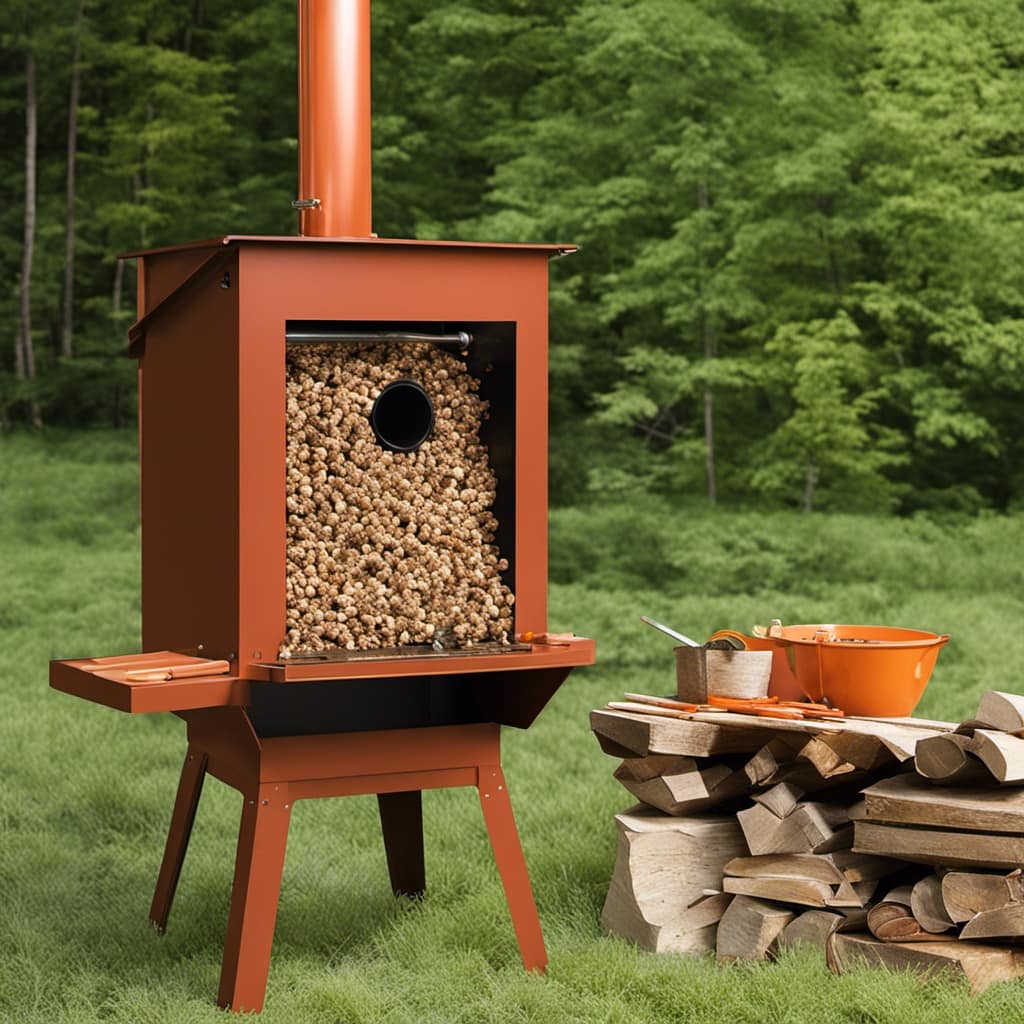
Additionally, the choice between hardwood and softwood can also affect the performance of your stove. Hardwoods tend to burn longer and produce more heat than softwoods.
Therefore, it is important to choose wood with a lower moisture content and consider using hardwood for optimal stove performance.
Moisture Content and Efficiency
The higher the moisture content in the wood, the less efficient the stove operates. When wood with high moisture is burned, a significant amount of heat is wasted in evaporating the water instead of heating your home. To maximize heat output and prevent creosote buildup, it is crucial to use well-seasoned firewood with a moisture content of 20% or less.
Moisture Content and Efficiency:

| Moisture Content | Efficiency Level |
|---|---|
| 0-10% | High |
| 10-15% | Medium |
| 15-20% | Low |
| >20% | Very low |
| >30% | Inefficient |
As shown in the table, wood with a moisture content above 20% is considered very low in efficiency. This means that the stove will not produce as much heat and may also lead to the buildup of creosote, a highly flammable substance that can cause chimney fires. To ensure optimal efficiency and safety, it is essential to properly season and store firewood to maintain a moisture content of 20% or less.
Hardwood Vs. Softwood
Using hardwood instead of softwood for my firewood has been more efficient in terms of heat output and reducing creosote buildup.
Hardwood, such as oak or maple, has a higher density and greater energy content compared to softwood like pine or spruce. This means that hardwood burns slower and produces more heat per unit of wood.
Additionally, hardwood has a lower resin content, which reduces the formation of creosote, a highly flammable and sticky substance that can accumulate in the chimney.
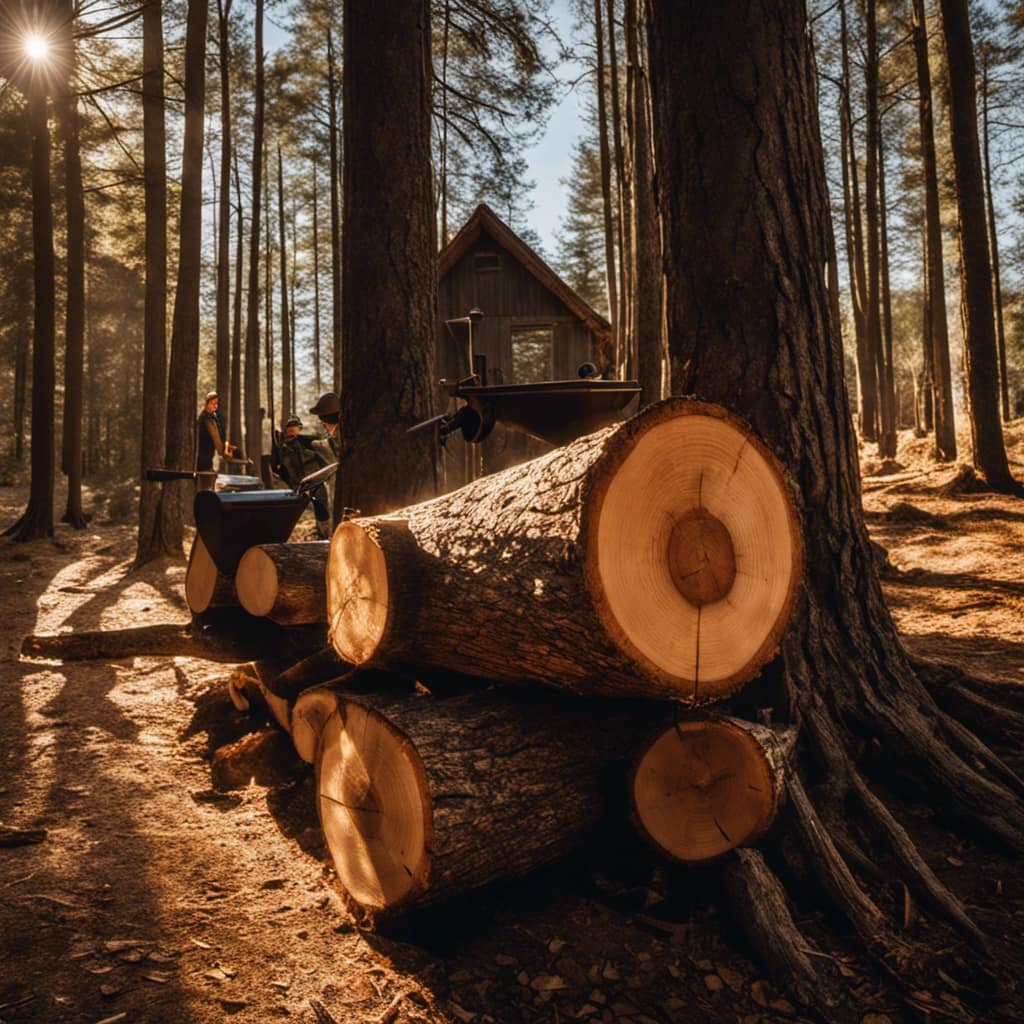
Softwood, on the other hand, tends to burn faster and produce less heat. It also contains higher levels of resin, leading to a greater risk of creosote buildup.
Therefore, using hardwood for my firewood not only provides a longer-lasting and warmer fire but also minimizes the potential hazards associated with creosote.
Preparing Your Wood for Burning
Before I can start burning wood in my stove, I need to ensure that it’s properly prepared. This involves three key steps: checking the moisture levels, storing the wood correctly, and seasoning it properly.
Wood Moisture Levels
I can tell if the wood is ready to burn by checking its moisture levels. Wood moisture testing is crucial in preventing wood rot and ensuring efficient burning. To determine the moisture content, I use a moisture meter specifically designed for wood. By inserting the prongs into the wood, the meter provides an accurate reading. Ideally, the moisture content should be below 20% for optimal burning.
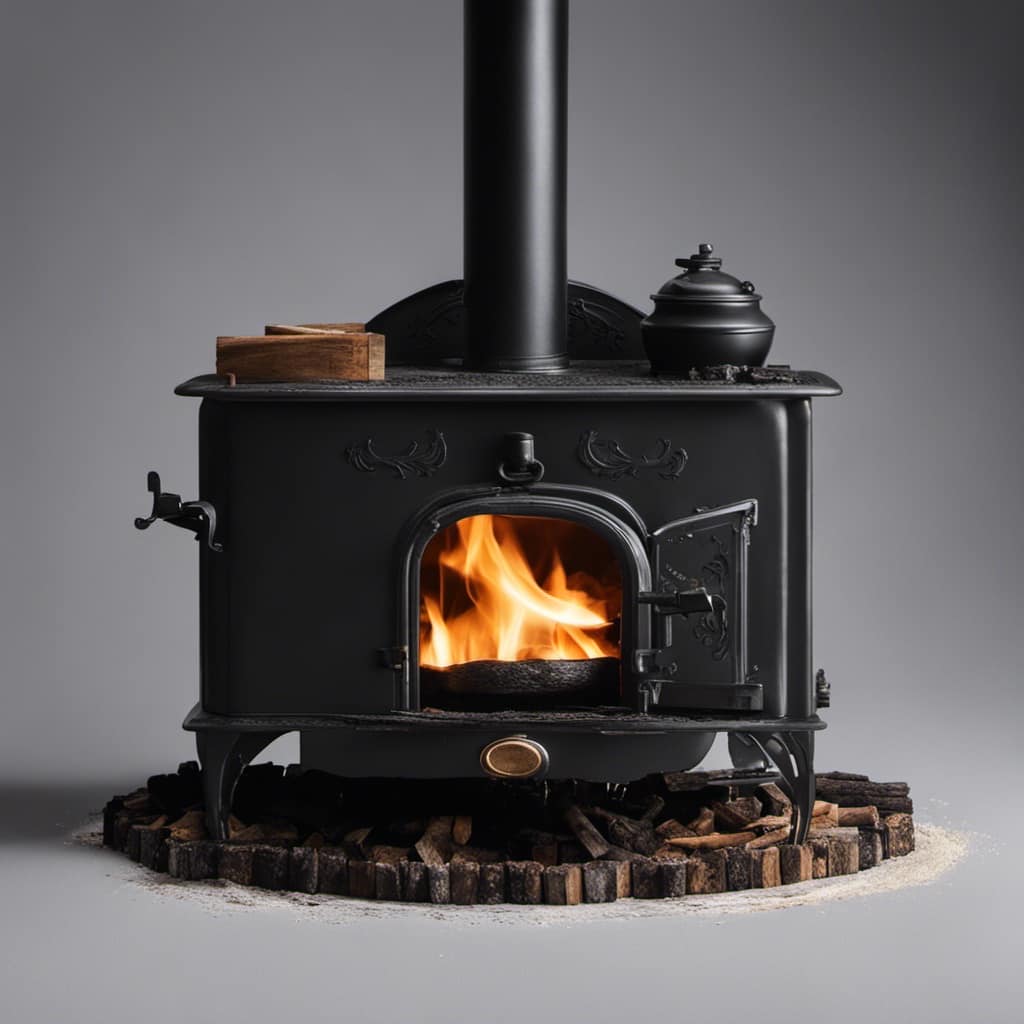
If the wood is too wet, it won’t burn efficiently and can cause excessive smoke and creosote buildup in the stove. High moisture levels also increase the risk of wood rot, which can damage the structural integrity of the wood. Therefore, it’s essential to properly season the wood and ensure it has a low moisture content before using it in the stove.
This brings us to the next important aspect of wood preparation: proper wood storage.
Proper Wood Storage
To keep the wood in good condition, I store it in a dry and well-ventilated area. Proper wood storage is crucial for preventing mold growth and ensuring the wood is ready to be used efficiently in my wood stove.
Here are three wood stacking methods I use to maximize airflow and minimize moisture retention:
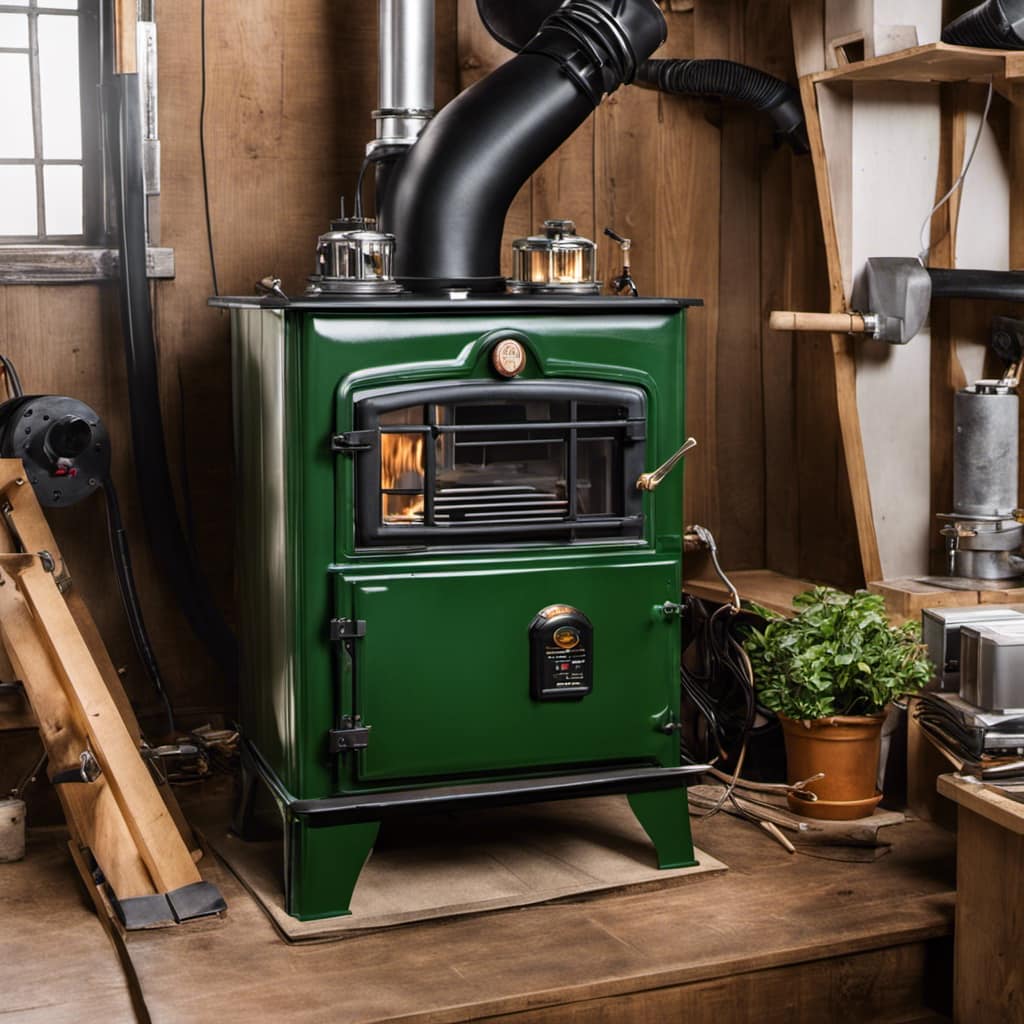
The crisscross method: I stack the wood in alternating layers, forming a crisscross pattern. This allows for better ventilation and prevents mold from forming on the bottom layers.
The pyramid method: I start by creating a base layer of larger logs, then stack smaller logs on top in a pyramid shape. This method creates a stable structure that promotes airflow and prevents moisture accumulation.
The lean-to method: I stack the wood against a wall or fence in a slanted manner, with the top leaning slightly forward. This method allows rainwater to run off easily and encourages better airflow.
Seasoning Firewood Correctly
Seasoning firewood properly ensures it burns efficiently and produces less smoke. When it comes to seasoning firewood, there are a few key tips to keep in mind.
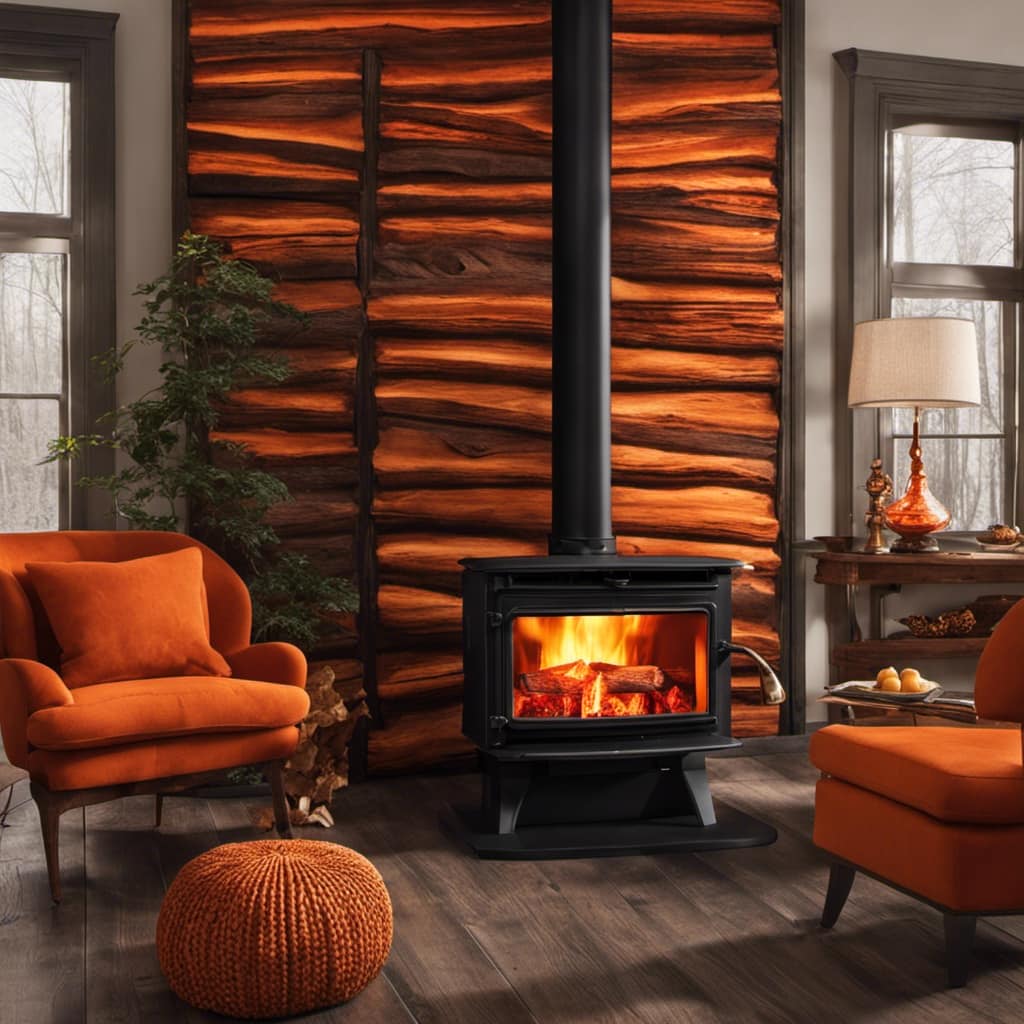
First, it’s important to cut the wood to the appropriate size, usually around 16 inches in length. This allows for better airflow and faster drying.
Next, stack the wood in a single row, with plenty of space between the logs for air circulation. It’s also crucial to keep the wood off the ground, using pallets or other forms of support. This prevents moisture from seeping into the wood.
Lastly, make sure to give the wood enough time to dry thoroughly, generally around 6 to 12 months.
The benefits of properly seasoned firewood are numerous. It burns hotter and more efficiently, providing more heat and saving you money in the long run. Additionally, properly seasoned firewood produces less smoke and creosote, reducing the risk of chimney fires and improving air quality.
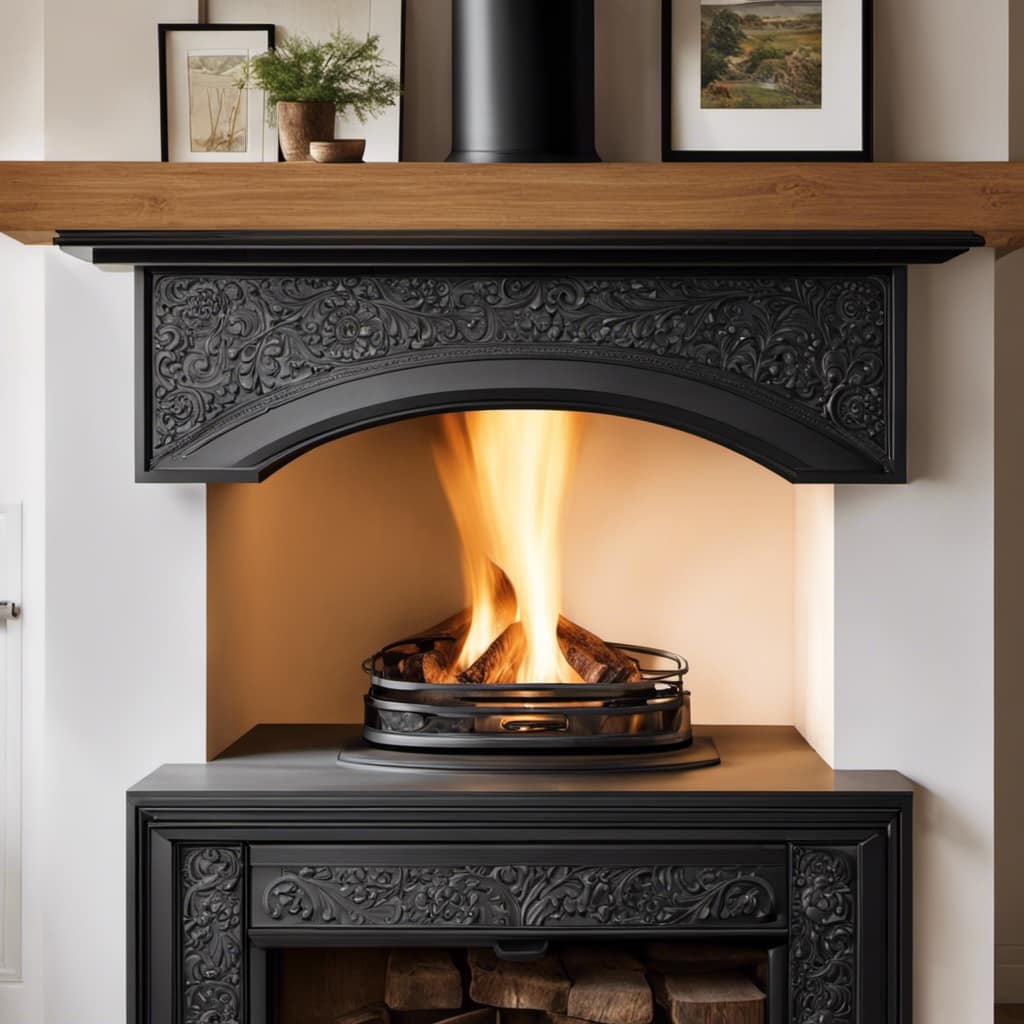
Cleaning and Preparing the Stove Before Loading
Before loading the wood stove, I always make sure to clean and prepare it properly. This not only ensures the safety of my home, but also helps to maximize the efficiency of the stove. Here are the steps I follow to clean and prepare my wood stove:
Remove ashes: I start by removing any leftover ashes from the previous burn. Using a metal scoop, I carefully transfer the ashes into a metal container. It’s important to wait until the ashes have completely cooled before disposing of them.
Clean the firebox: Next, I clean the firebox using a brush and dustpan. I remove any loose debris, such as wood chips or bark, and ensure that the surfaces are clear of any obstructions. This helps to improve the airflow and prevent any potential fire hazards.
Inspect the chimney: Lastly, I inspect the chimney for any signs of creosote buildup or blockages. Creosote is a flammable substance that can accumulate over time and increase the risk of a chimney fire. If necessary, I schedule a professional chimney cleaning to ensure the safety of my home.
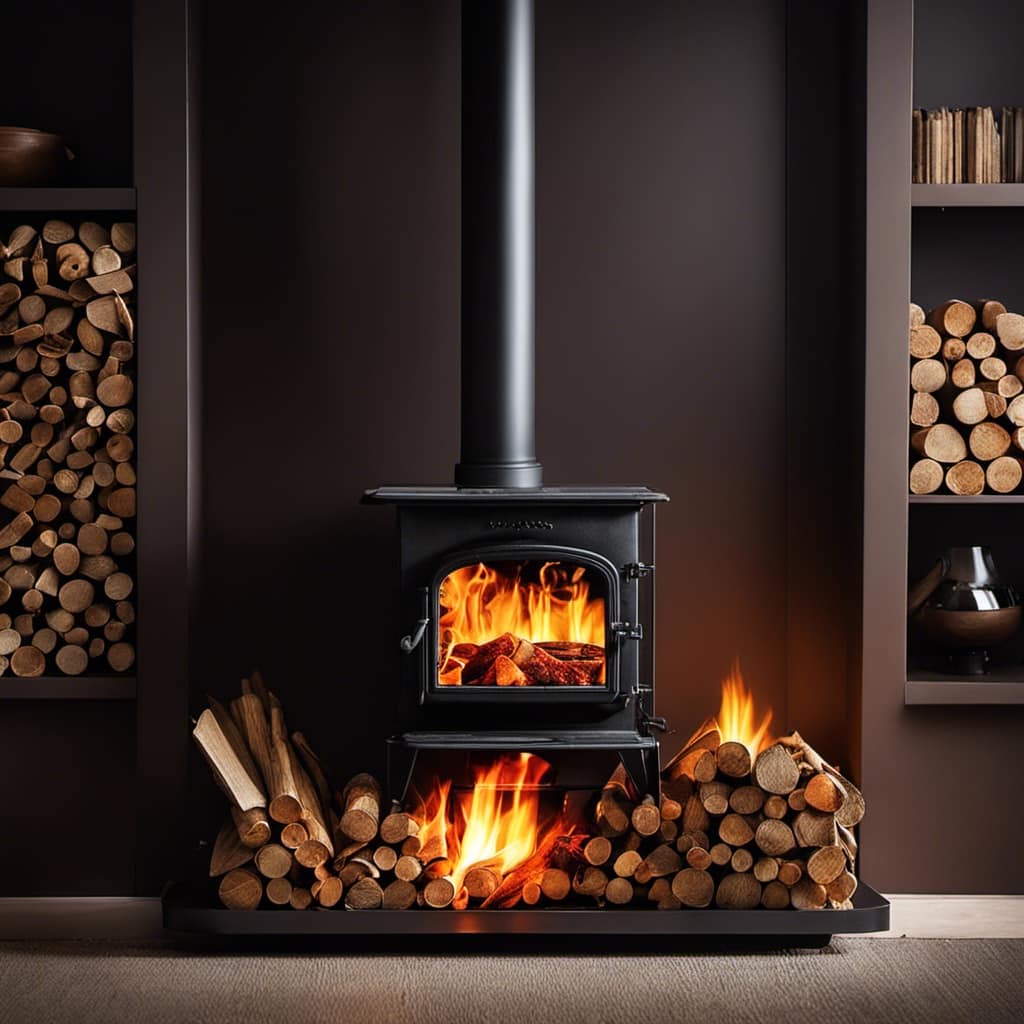
Loading Techniques for Efficient Burning
When it comes to efficient burning, I find that stacking smaller pieces of well-seasoned firewood at the back of the firebox helps to promote better airflow and more complete combustion. Understanding draft control is crucial for maintaining a consistent temperature in the wood stove. The draft control lever or knob on the stove regulates the amount of air entering the firebox. By adjusting the draft control, you can increase or decrease the intensity of the fire. To start, open the draft control fully to allow maximum airflow. Once the fire is established, you can adjust the draft control to maintain the desired temperature.
If the stove is too hot, close the draft control slightly to reduce the airflow. Conversely, if the fire isn’t burning hot enough, open the draft control to increase the airflow. By carefully managing the draft control, you can ensure efficient burning and maintain a comfortable temperature in your home.
Now, let’s move on to arranging logs for optimal heat distribution.
Arranging Logs for Optimal Heat Distribution
Now that we’ve discussed loading techniques for efficient burning, let’s dive into the importance of arranging logs for optimal heat distribution. Proper log positioning is crucial for ensuring maximum heat output and efficiency in your wood stove.
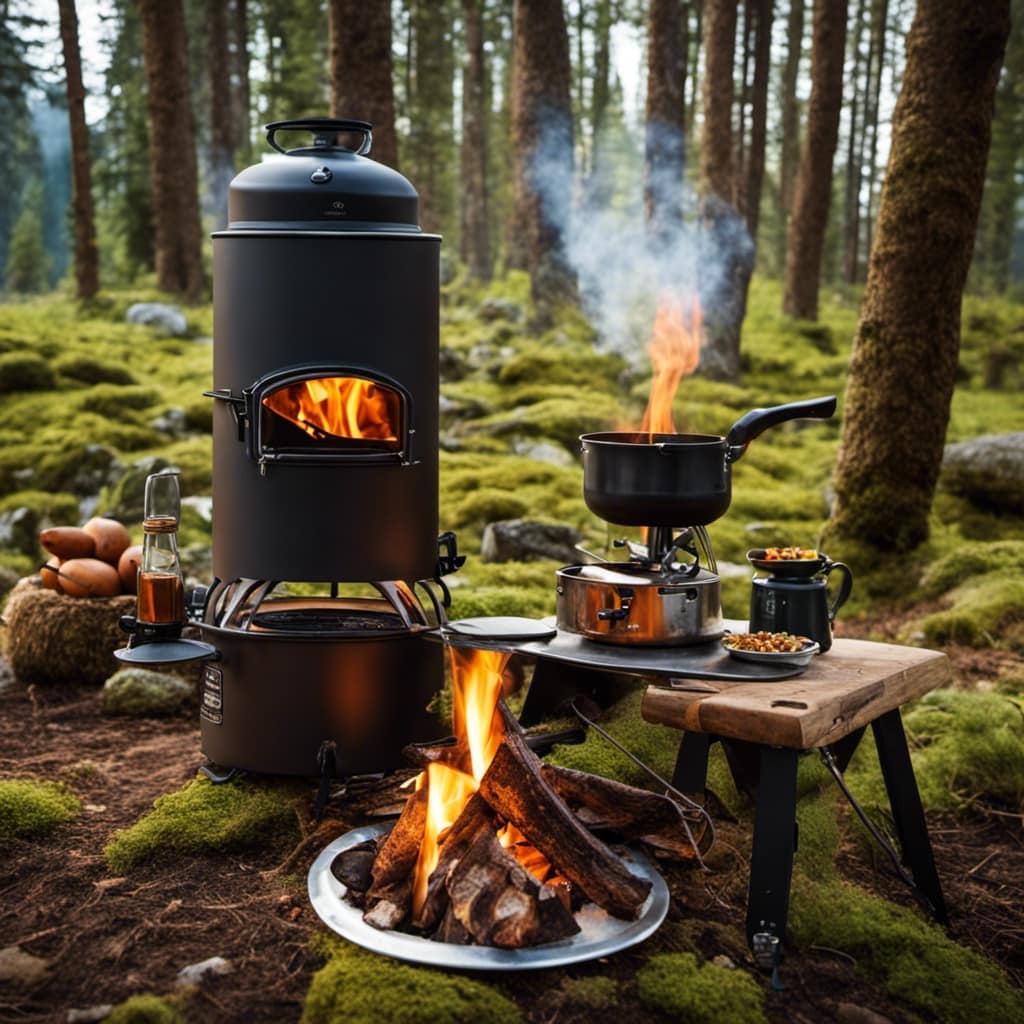
By strategically placing your logs, you can create a steady flow of air and promote even burning throughout the firebox.
To help you visualize the process, here are three key tips for arranging logs in your wood stove:
Stack logs in a crisscross pattern: Start by placing two larger logs parallel to each other at the bottom of the firebox. Then, lay two smaller logs perpendicular to the first two, creating a crisscross pattern. This arrangement allows for better airflow between the logs and ensures efficient combustion.
Leave space between logs: It’s essential to leave gaps between the logs to allow oxygen to circulate and fuel the fire. Avoid tightly packing the logs together, as this can restrict airflow and lead to incomplete combustion.
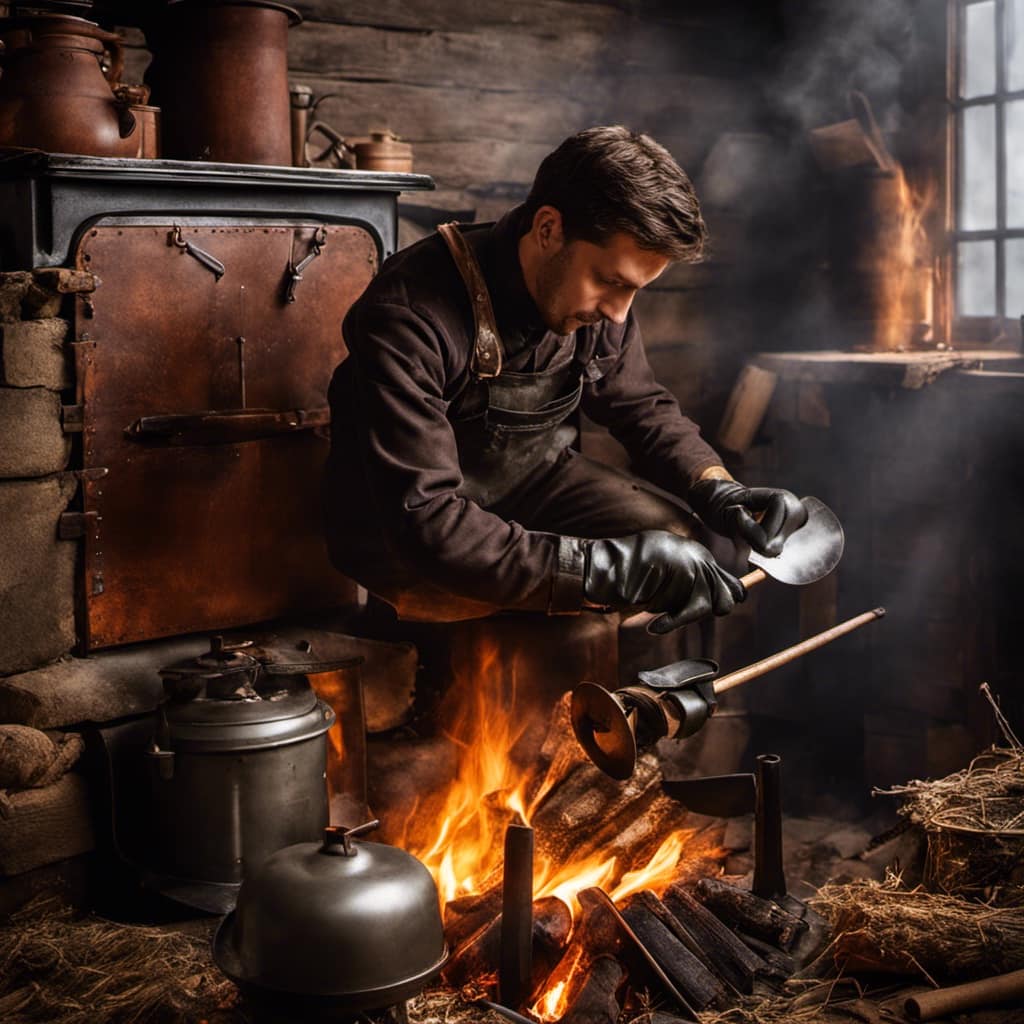
Position logs closer to the front: Arrange the logs closer to the front of the firebox, leaving some space at the back. This configuration encourages the flames and heat to move forward, maximizing the heat distribution into your living space.
Maximizing Burn Time With Proper Loading
I find that by arranging the logs in a crisscross pattern and leaving space between them, I can maximize the burn time and efficiency of my fire. This method allows for better airflow and ensures that the logs burn evenly, maximizing heat output.
When loading my wood stove, I follow a specific process to ensure that I achieve the best results.
First, I start by placing larger logs at the bottom of the stove, creating a solid base. These logs act as a foundation and provide a stable structure for the fire.

Next, I stack medium-sized logs on top, making sure to leave some space between them. This space allows for better airflow, which is crucial for a long-lasting and efficient fire.
To further control airflow, I add smaller kindling and wood chips on top of the logs. This creates a smaller, hotter fire that burns more efficiently and promotes a longer burn time.
Finally, I ignite the fire and adjust the airflow controls on my stove to maintain the perfect balance between combustion and heat output.
By following this loading method and controlling the airflow, I’ve been able to maximize the burn time of my fire while ensuring a consistent and efficient heat output.
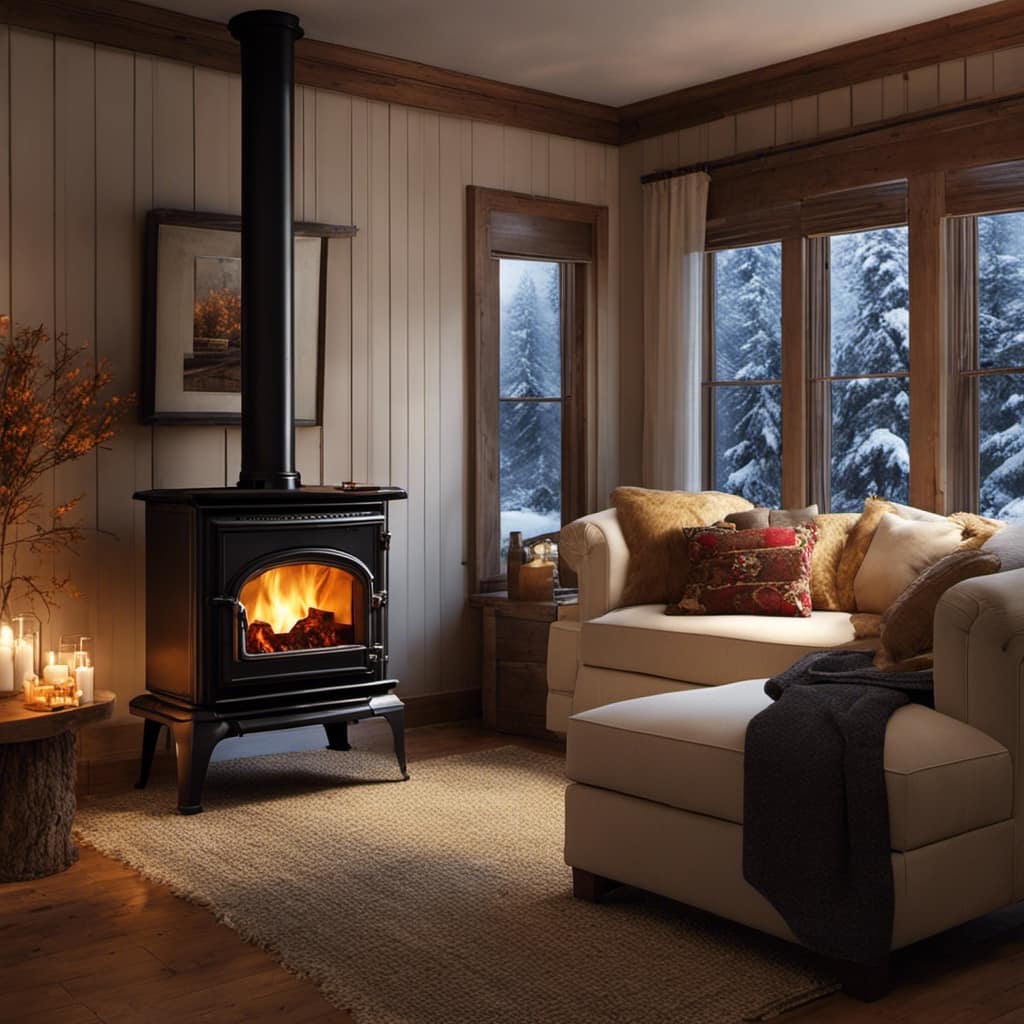
It’s important to note that every wood stove is different, so it may take some experimentation to find the loading method that works best for your specific stove.
Common Mistakes to Avoid When Loading a Wood Stove
A common mistake to avoid is overcrowding the firebox, as this can restrict airflow and lead to a less efficient burn. When loading a wood stove, it’s important to follow these tips and tricks to ensure optimal performance:
Use smaller pieces of wood: Instead of trying to fit large logs into the firebox, opt for smaller pieces. This allows for better airflow and helps the fire burn more efficiently.
Arrange the wood properly: Stack the wood in a crisscross pattern, leaving space between the pieces. This allows for better circulation of air and helps the fire burn evenly.
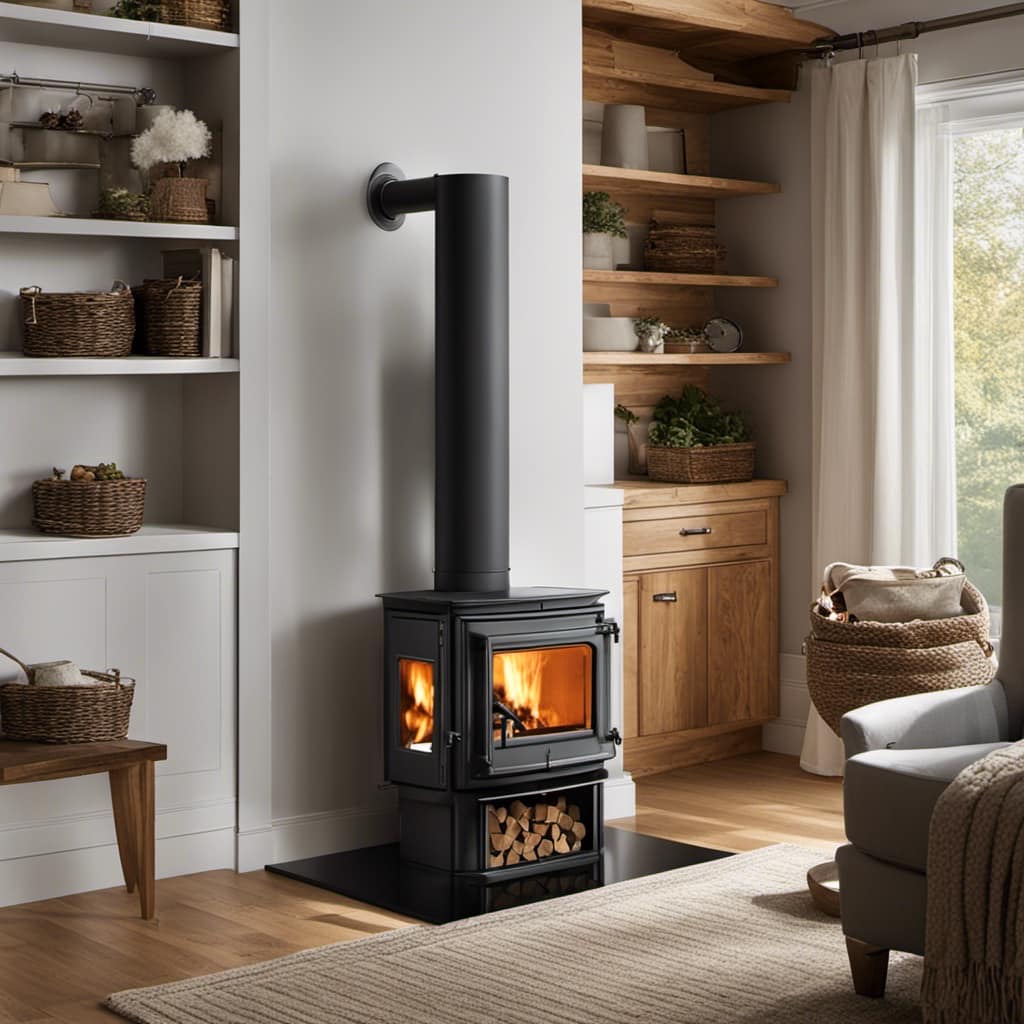
Avoid stacking the wood too high: While it might be tempting to load the firebox to its maximum capacity, this can hinder airflow. Aim to keep the wood stacked below the top of the firebox to ensure proper combustion.
Is Loading the Wood Stove Different from Using it, or are they the Same Process?
Loading a wood stove and using a wood stove are two distinct processes. Loading involves placing wood inside the stove, while using it refers to lighting the fire, controlling the temperature, and managing the airflow. Both steps are crucial for effective heating and safety when using a wood stove.
Frequently Asked Questions
How Often Should I Clean My Wood Stove?
Cleaning frequency is an important aspect of proper maintenance for a wood stove. It’s crucial to keep your wood stove clean to ensure its efficiency and safety.
Regular cleaning should be done at least once a month or more frequently depending on usage. This involves removing ashes, cleaning the flue, and inspecting the stove for any signs of wear or damage.
Proper cleaning and maintenance will help prolong the lifespan of your wood stove and ensure optimal performance.

Can I Use Newspaper or Cardboard to Start the Fire in My Wood Stove?
Sure, you can use newspaper or cardboard as alternative methods for starting a fire in your wood stove. However, it’s important to note that using fire starters specifically designed for wood stoves is a safer and more efficient option.
These fire starters are designed to ignite quickly and provide a consistent flame, ensuring a successful fire. They’re widely available and easy to use, making them a convenient choice for starting your wood stove fire.
What Should I Do if My Wood Stove Is Smoking Excessively?
If my wood stove is smoking excessively, there are a few troubleshooting steps I can take.
First, I should ensure that the wood I’m using is properly seasoned and dry. Wet wood can lead to excessive smoke.
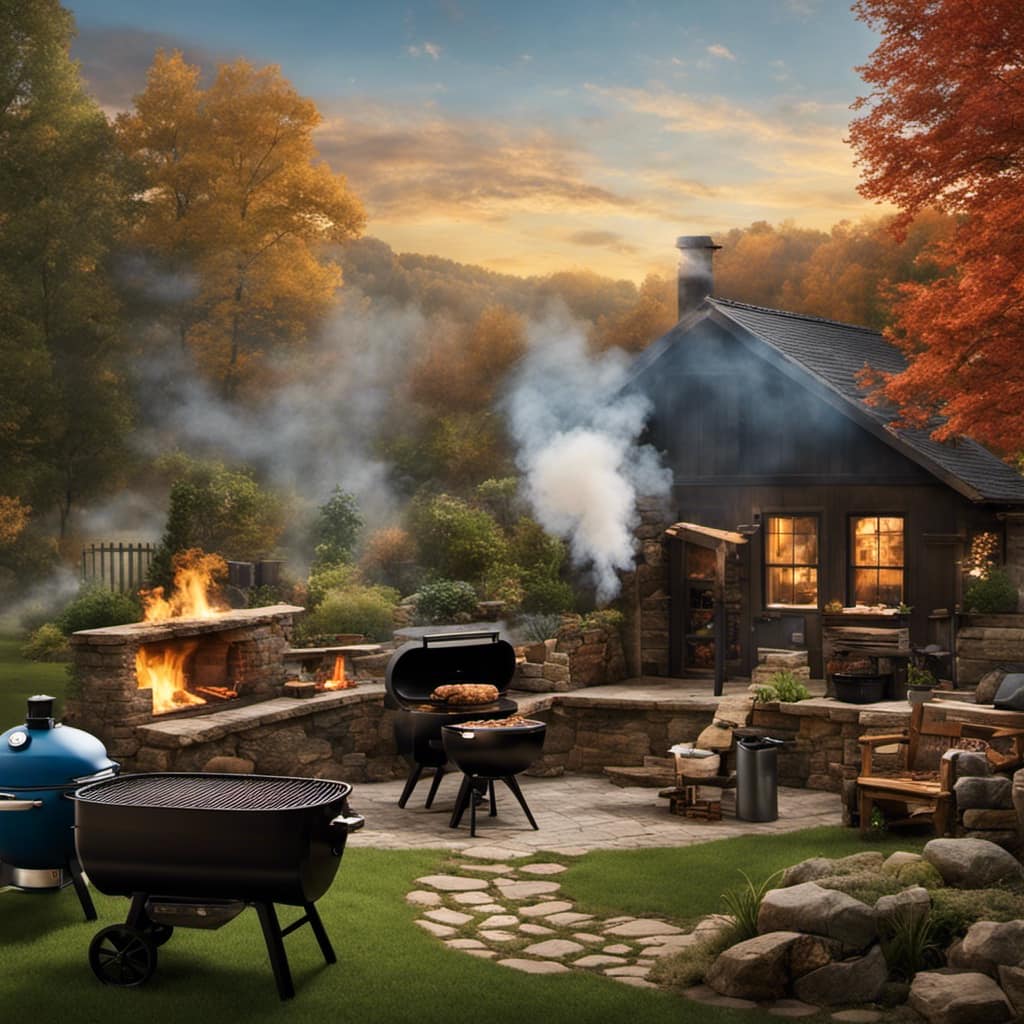
Next, I should check if the stove’s air vents are open enough to allow for proper airflow.
Additionally, cleaning the stovepipe and chimney regularly can help improve efficiency and reduce smoke.
Can I Leave the Ashes From My Previous Fire in the Stove When Loading a New One?
Can I leave the ashes from my previous fire in the stove when loading a new one?
Well, it’s not advisable. Cleaning ashes is an important step in maintaining your wood stove. Ash buildup can hinder proper airflow and reduce the efficiency of your fire. Additionally, leaving ashes in the stove can create a fire hazard.
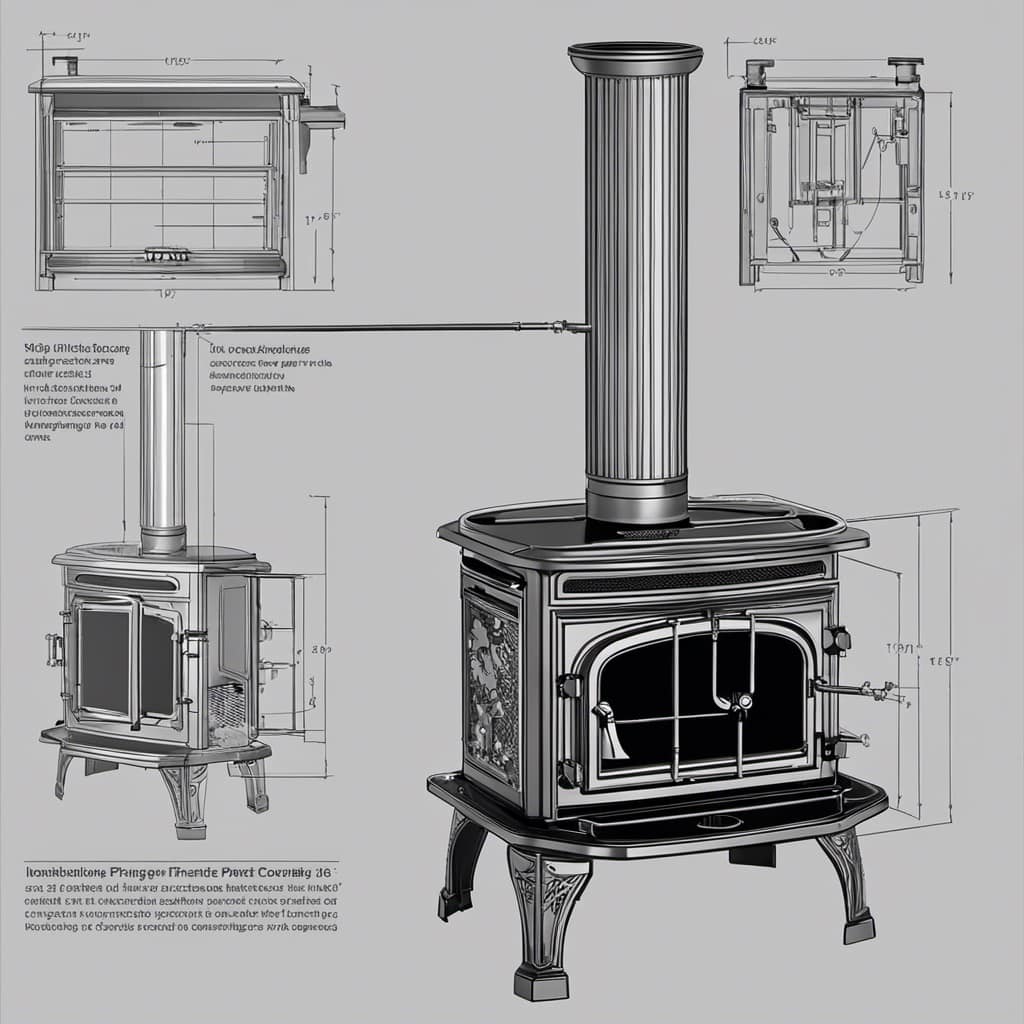
It’s best to remove the ashes and store them in a proper fireproof container until they can be safely disposed of.
How Can I Prevent Creosote Buildup in My Wood Stove?
To prevent creosote buildup in my wood stove, regular cleaning is essential. I make sure to clean the stove at least once a month, or more frequently if needed.
This involves removing ashes, scraping off any creosote deposits, and cleaning the chimney. By maintaining a clean stove and chimney, I reduce the risk of creosote buildup, which can lead to chimney fires.
Regular cleaning is crucial for the safe and efficient operation of a wood stove.
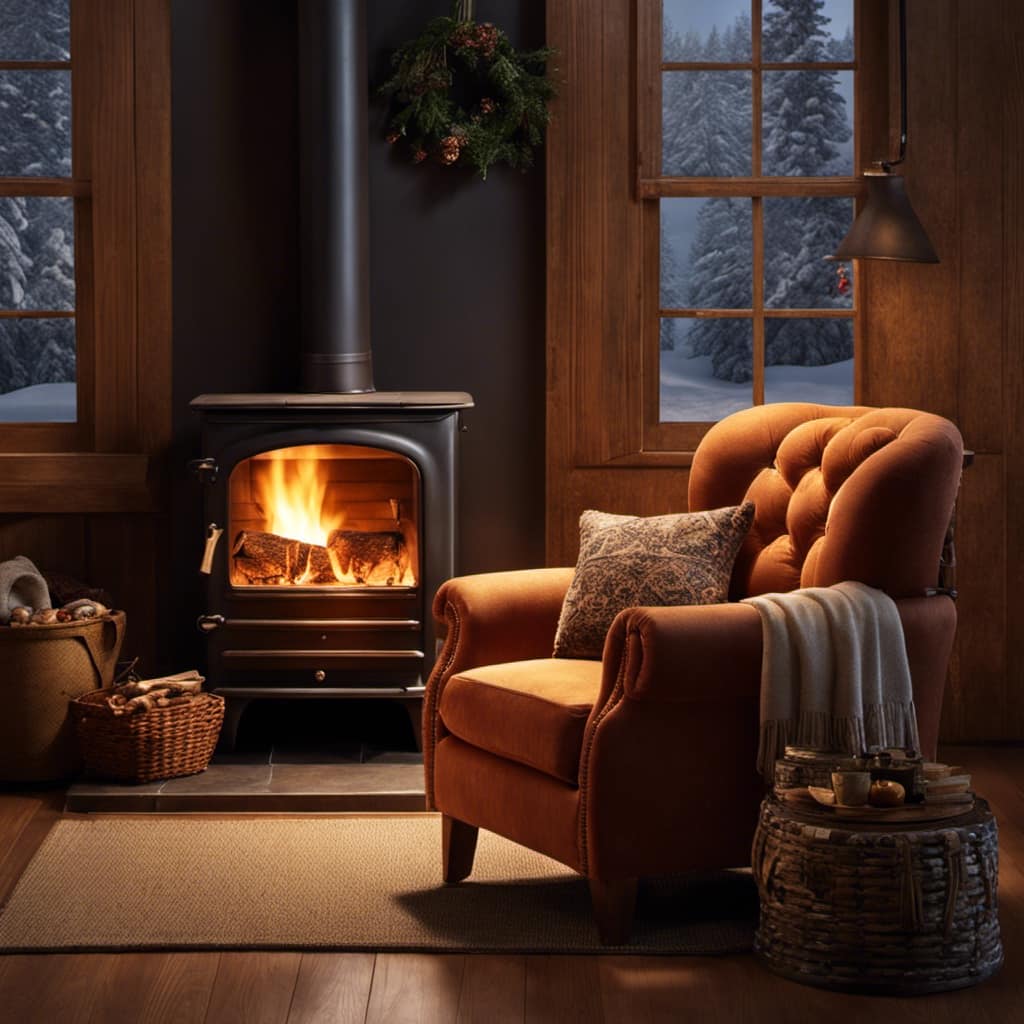
Conclusion
In conclusion, loading a wood stove properly is essential for efficient and effective burning. By understanding the anatomy of your stove, selecting the right type of wood, and preparing it correctly, you can maximize heat distribution and burn time.
One example is John, who used seasoned hardwood logs and arranged them in a crisscross pattern, resulting in a steady and long-lasting fire.
Avoiding common mistakes will ensure your wood stove operates at its best, providing warmth and comfort throughout the cold winter months.
Growing up surrounded by the vast beauty of nature, Sierra was always drawn to the call of the wild. While others sought the comfort of the familiar, she ventured out, embracing the unpredictable and finding stories in the heartbeat of nature.
At the epicenter of every remarkable venture lies a dynamic team—a fusion of diverse talents, visions, and passions. The essence of Best Small Wood Stoves is crafted and refined by such a trio: Sierra, Logan, and Terra. Their collective expertise has transformed the platform into a leading authority on small wood stoves, radiating warmth and knowledge in equal measure.




